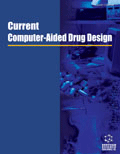
Current Computer-Aided Drug Design
Scope & Guideline
Fostering Collaboration for Breakthroughs in Drug Discovery
Introduction
Aims and Scopes
- Computational Drug Design and Discovery:
The journal emphasizes methodologies for computational drug design, including molecular docking, QSAR modeling, and molecular dynamics simulations, to identify and optimize potential drug candidates. - Network Pharmacology:
A significant focus is placed on network pharmacology, which integrates systems biology with pharmacological data to understand drug mechanisms and interactions within biological networks. - In Silico Evaluation:
The use of in silico approaches for evaluating the pharmacokinetic and toxicological profiles of drug candidates is a core area, ensuring that new compounds are not only effective but also safe for use. - Integration of Traditional and Modern Approaches:
The journal publishes studies that explore the integration of traditional medicine practices with modern computational techniques, particularly in the context of natural product drug discovery. - AI and Machine Learning in Drug Design:
There is a growing emphasis on the application of artificial intelligence and machine learning methods to predict drug-target interactions, optimize drug design processes, and analyze large datasets.
Trending and Emerging
- Artificial Intelligence and Machine Learning:
The application of AI and machine learning techniques for predicting drug interactions and optimizing drug design is rapidly gaining traction, reflecting a broader trend in the pharmaceutical industry towards data-driven decision making. - Multi-target Drug Design:
Emerging research is increasingly focusing on multi-target drug design strategies, which consider the complex interactions within biological systems, thus enhancing the effectiveness of therapeutic agents. - Integration of Big Data and Bioinformatics:
There is a growing trend towards leveraging big data and bioinformatics tools to analyze vast datasets for drug discovery, enabling more informed predictions and insights into drug efficacy and safety. - Virtual Screening Techniques:
Advanced virtual screening methodologies, including hybrid approaches that combine multiple computational techniques, are becoming prevalent as researchers seek to streamline the drug discovery process. - Mechanistic Studies Using Network Pharmacology:
The use of network pharmacology to elucidate the mechanisms of action of drugs and their interactions within biological systems is on the rise, emphasizing a systems biology approach to drug discovery.
Declining or Waning
- Traditional Medicinal Approaches:
While traditional medicinal approaches have been significant in the past, there has been a noticeable decline in studies solely focused on herbal or traditional remedies without the integration of computational methods. - Basic Pharmacological Studies:
Basic pharmacological studies, which do not employ advanced computational techniques, are becoming less frequent as the journal shifts towards more technologically-driven research. - Single-target Drug Design:
Research that focuses on single-target drug design is decreasing as there is a growing recognition of the importance of polypharmacology and multi-target approaches in drug development. - In vitro Studies without Computational Validation:
There is a decline in the publication of in vitro studies that do not include computational validation or modeling, reflecting a preference for studies that integrate both experimental and computational methods.
Similar Journals

DRUG DEVELOPMENT RESEARCH
Driving the evolution of medicine with impactful research.DRUG DEVELOPMENT RESEARCH is a premier interdisciplinary journal published by Wiley, focusing on the latest advancements in drug discovery, pharmacology, and toxicology. With an ISSN of 0272-4391 and an E-ISSN of 1098-2299, this esteemed publication has been a cornerstone in the field since its inception in 1981 and continues to provide cutting-edge research until 2024. Its rigorous peer-review process and strategic placement in Q2 of the Drug Discovery category, as well as ranking #60 out of 157 in Scopus, underscore the journal's relevance and influence, boasting a respectable 62nd percentile ranking. While the journal does not currently offer open access, it remains a vital resource for researchers, professionals, and students seeking to expand their knowledge on the processes of drug development, identifying new therapeutic targets, and assessing the efficacy and safety of novel compounds. Situated in Hoboken, NJ, this journal stands at the forefront of pharmaceutical innovation, making significant contributions to the advancement of medical science.

SAR AND QSAR IN ENVIRONMENTAL RESEARCH
Innovating Research at the Intersection of Chemistry and Ecology.SAR and QSAR in Environmental Research is a leading journal published by Taylor & Francis Ltd, focusing on the integration of Structure-Activity Relationships (SAR) and Quantitative Structure-Activity Relationships (QSAR) within the realm of environmental science. Since its inception in 1993, the journal has been a pivotal platform for disseminating innovative research that bridges the gap between chemistry and environmental sustainability, ranking in the Q3 quartile for Bioengineering, Drug Discovery, and miscellaneous Medicine categories as of 2023. Featuring a compelling collection of peer-reviewed articles, it caters to academic and professional audiences seeking to enhance their understanding of molecular interactions and their implications for environmental health. Although the journal does not currently offer Open Access options, its rigorous editorial standards ensure high-quality, impactful publications that are crucial for advancing methodologies in pharmacology, toxicology, and bioengineering. With an ISSN of 1062-936X and an E-ISSN of 1029-046X, SAR and QSAR in Environmental Research continues to serve as an essential resource for researchers, academics, and practitioners dedicated to innovative approaches in environmental research.
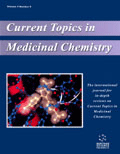
CURRENT TOPICS IN MEDICINAL CHEMISTRY
Transforming Challenges into Solutions in Medicinal ChemistryCURRENT TOPICS IN MEDICINAL CHEMISTRY is a prestigious journal published by Bentham Science Publishers Ltd, dedicated to advancing the field of medicinal chemistry through the dissemination of high-quality research from 2001 to 2024. With an ISSN of 1568-0266 and an E-ISSN of 1873-4294, this journal is recognized for its significant contributions, as evidenced by its Scopus ranking in the 63rd percentile in the category of Drug Discovery, specifically at position #58 out of 157. Currently placed in Quartile 3 within Drug Discovery and Quartile 2 in miscellaneous medicine as of 2023, it serves as an essential resource for researchers, professionals, and students interested in the latest developments, methodologies, and applications in medicinal chemistry. The journal aims to foster collaboration and innovation by featuring original research articles, reviews, and brief communications that address current and emerging challenges in the discipline. Although it is not an open access platform, the journal's rich content is indispensable for those striving to enhance therapeutic strategies and drug development processes.

Drug Research
Illuminating Pathways in Pharmacological StudiesDrug Research, published by GEORG THIEME VERLAG KG, is a pivotal journal housed in the vibrant realm of pharmacology and drug discovery. With a commitment to advancing the understanding of medicinal substances, this journal serves as an essential resource for researchers, professionals, and students dedicated to the field. The journal boasts an ISSN of 2194-9379 and an E-ISSN of 2194-9387, reflecting its dual commitment to print and digital accessibility. Despite its status as a Q3 journal in both Drug Discovery and Miscellaneous Medicine categories as of 2023, it continues to offer valuable insights with a focus on the latest innovations, methodologies, and findings in drug research. Based in Germany, Drug Research promotes scholarly communication and collaboration within the scientific community, ensuring that its contributions remain impactful in shaping future therapeutic discoveries. The journal is indexed in relevant databases, enhancing its visibility and reach, thus fostering a robust academic dialogue.
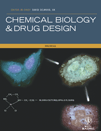
Chemical Biology & Drug Design
Transforming research into real-world health solutions.Chemical Biology & Drug Design, an esteemed publication by WILEY, serves as a vital platform for the dissemination of pioneering research in the interdisciplinary fields of biochemistry, drug discovery, molecular medicine, organic chemistry, and pharmacology. With a dedicated commitment to advancing the understanding of chemical interactions and drug development, this journal not only fosters innovation but also bridges the gap between theoretical research and practical applications. It boasts an impressive impact factor and is recognized in the 2023 category quartiles as Q3 in Biochemistry and Molecular Medicine, and Q2 in Drug Discovery, Organic Chemistry, and Pharmacology, indicating its relevance and influence in these crucial areas. The journal’s rankings across various Scopus categories further solidify its position as a reputable resource for researchers, professionals, and students striving to stay at the forefront of medicinal chemistry and drug design. While primarily traditional access-based, the journal's evolving scope from 2006 to 2024 ensures an ongoing contribution to essential scientific dialogue, making it an indispensable read for those committed to advancing health sciences.
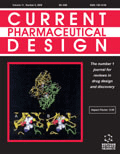
CURRENT PHARMACEUTICAL DESIGN
Innovating Drug Discovery, Shaping Tomorrow's TherapiesCURRENT PHARMACEUTICAL DESIGN is a leading journal in the fields of Drug Discovery and Pharmacology, published by Bentham Science Publishers Ltd in the dynamic United Arab Emirates. With an impressive historical span from 1995 to 2024, this journal serves as a vital platform for disseminating innovative research findings, breakthrough methodologies, and critical reviews that shape the future of pharmaceutical sciences. Ranked Q2 in both Drug Discovery and Pharmacology categories according to the 2023 metrics, it places itself within the top-tier percentile, catering to a diverse audience of researchers, industry professionals, and students. The journal’s commitment to high-quality research exploration is evidenced by its Scopus ranking, where it is positioned favorably within its category ranks. Although currently not Open Access, CURRENT PHARMACEUTICAL DESIGN remains an essential resource for those looking to stay at the forefront of pharmacological advancements and drug development strategies.
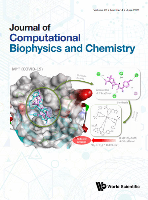
Journal of Computational Biophysics and Chemistry
Advancing the Frontiers of Biophysics and ChemistryThe Journal of Computational Biophysics and Chemistry, published by World Scientific Publishing Co. Pte Ltd, is a distinguished platform dedicated to advancing the fields of biophysics and computational chemistry. With an ISSN of 2737-4165 and an E-ISSN of 2737-4173, this journal has garnered attention since its inception, earning a Q3 ranking in Computational Theory and Mathematics and Q4 rankings in both Computer Science Applications and Physical and Theoretical Chemistry as of 2023. The scope of the journal encompasses innovative research that integrates computational techniques with biochemical applications, making it essential reading for researchers, professionals, and students alike. With open access options available, the journal ensures that cutting-edge findings are easily accessible to a global audience, thereby fostering collaboration and innovation in the scientific community. Based in Singapore, the journal aims to converge ideas and methodologies from 2021 to 2024, paving the way for transformative insights in computational methods. Join a community at the forefront of research and applications that bridge disciplines through rigorous scholarship and pioneering discoveries.
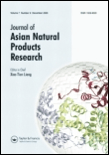
JOURNAL OF ASIAN NATURAL PRODUCTS RESEARCH
Bridging Cultures Through Natural Product ResearchJOURNAL OF ASIAN NATURAL PRODUCTS RESEARCH is a prestigious publication in the field of natural products, focusing on valuable research spanning analytical chemistry, pharmacology, and complementary medicine. Published by Taylor & Francis Ltd in the United Kingdom, this journal has established itself as a key resource for academics and professionals seeking to explore advancements in drug discovery and organic chemistry. With a converged publication timeline from 1998 to 2024, the journal boasts several commendable category quartiles as of 2023, reflecting its robust standing in the research community: Q2 in Complementary and Alternative Medicine, Q3 in multiple domains including Analytical Chemistry and Organic Chemistry, and Q4 in Molecular Medicine. Although it currently does not offer open access, the journal remains a valuable compendium for empirical research and innovative studies in areas such as pharmacology and medicinal chemistry. Researchers, professionals, and students alike will find the JOURNAL OF ASIAN NATURAL PRODUCTS RESEARCH to be an essential platform for sharing groundbreaking findings and fostering collaborations that lead to significant advancements in science and health.

Drug Design Development and Therapy
Advancing Therapeutic Innovations for a Healthier TomorrowDrug Design Development and Therapy is a premier open-access journal published by DOVE MEDICAL PRESS LTD, dedicated to advancing the fields of drug discovery, pharmaceutical science, and pharmacology. With an impressive Q1 ranking in its categories as of 2023, this journal is recognized for its significant contributions to the understanding of drug design and therapeutic innovations, making it an invaluable resource for researchers, professionals, and students alike. Established in 2007 and committed to open-access since 2008, the journal provides an inclusive platform for disseminating high-quality research from around the globe. With a robust impact factor and remarkable Scopus rankings, including a 24th place in Pharmaceutical Science and a 48th place in Pharmacology, it reflects a strong percentile performance, ensuring that published articles reach and impact a wide audience. By fostering the exchange of cutting-edge information on drug development and delivery systems, Drug Design Development and Therapy continues to play a crucial role in the ongoing battle against disease, promoting innovative approaches to therapeutic solutions and enhancing patient care.

MEDICINAL RESEARCH REVIEWS
Driving Excellence in Molecular Medicine ResearchMEDICINAL RESEARCH REVIEWS, published by Wiley, is a leading journal in the fields of Drug Discovery, Molecular Medicine, and Pharmacology. With an impressive impact factor and esteemed standing in its category quartiles (Q1 in all three fields), this journal serves as a vital platform for the dissemination of cutting-edge research and reviews that drive innovation in therapeutic development and molecular health sciences. Since its inception in 1981, MEDICINAL RESEARCH REVIEWS has garnered a robust readership within the scientific community, underscored by its high rankings in Scopus – where it ranks #3 in Pharmacology and #2 in Drug Discovery, placing it within the top echelons of academic influence. Researchers, professionals, and students alike benefit from its rich content and comprehensive approaches to tackling complex medicinal challenges, making it an essential resource for those invested in advancing the frontiers of biomedical research.